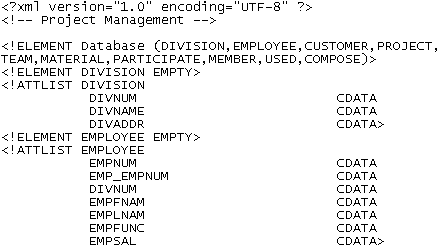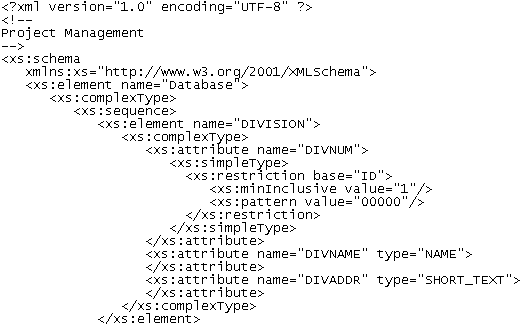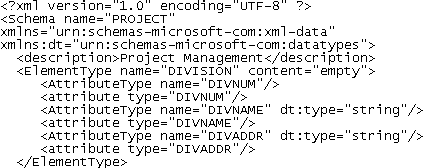An XML model (XSM) helps you analyze an XML Schema Definition (.XSD), Document Type Definition (.DTD) or XML-Data Reduced (.XDR) file. You can model, reverse-engineer, and generate each of these file formats.
XML (or eXtensible Markup Language) is increasingly used to hold application data because it:
Since XML structures can be very complex, it is much easier to visualize them through comprehensive and explicit diagrams, than to read XML-coded pages. With its Browser tree view and diagram, a PowerDesigner® XSM gives you a global and schematic view of all the elements composing your XSD, DTD, or XDR:
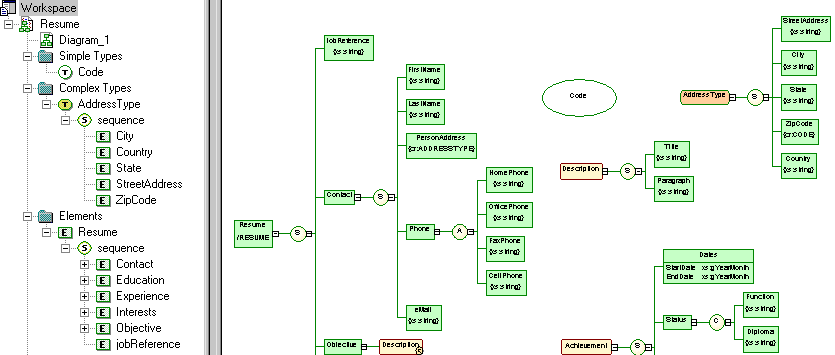
Once you have created an XML diagram, you can generate an XSD, a DTD or an XDR file from it for use in your application.
A PowerDesigner XSM allows you to generate and reverse engineer XSD, DTD and XDR files and also generate an XML model from a Physical Data Model (PDM), Object Oriented Model (OOM), or another XSM:
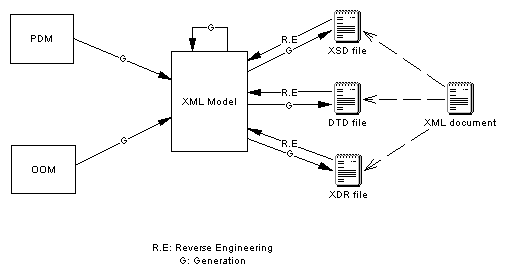
DTD, XSD or XDR
The structure of an XSM is described by a DTD, an XSD or an XDR file:
-
A DTD file is a basic way to describe the structure of an XML document. It is a raw list of all the legal elements making up an XML document. An extract of a DTD file follows:
-
An XSD file (or schema) is an elaborated way to describe the structure of an XML document. It can support namespaces, derivations, keys, simple and complex user-defined data types and a robust collection of predefined data types. An extract of an XSD file follows:
An XSD file always starts with the <schema> tag (root element). All objects created in the model will appear in the XSD file between the schema start-tag and end-tag
-
An XDR file is a simplified XSD file (or schema). It does not support simple and complex user-defined data types. An extract of an XDR file follows:
An XDR file always starts with the <schema> tag (root element). All objects created in the model will appear in the XDR file between the schema start-tag and end-tag
Suggested Bibliography
-
W3C XML Recommendation – http://www.w3.org/TR/REC-xml
-
W3C DTD Recommendation – http://www.w3.org/TR/REC-xml#dt-doctype
-
W3C XML Schema Recommendation – http://www.w3.org/XML/Schema#dev
-
W3C XML-Data Note – http://www.w3.org/TR/1998/NOTE-XML-data-0105/
